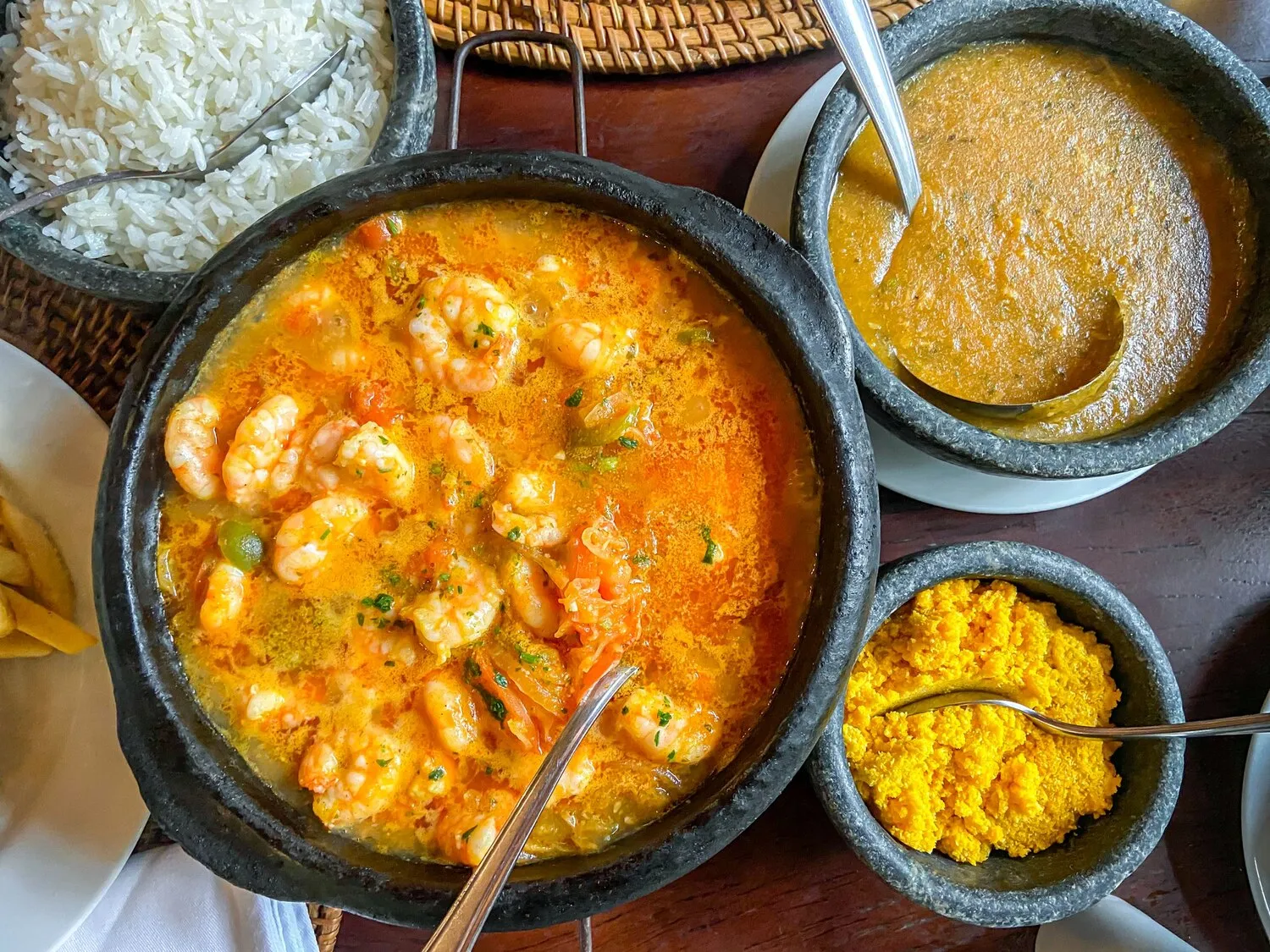
Moqueca
A seafood stew based on coconut milk and dendê oil.
Nutrition Facts
* The % Daily Value (DV) tells you how much a nutrient in a serving of food contributes to a daily diet. 2,000 calories a day is used for general nutrition advice.
Di Rango Cantina de Sabores
Moqueca's origins lie in the indigenous cooking traditions of Brazil, particularly among the Tupinambá people. African influences, brought by enslaved people, significantly shaped the dish, with the addition of ingredients like dendê oil and coconut milk. The dish evolved over centuries, blending indigenous ingredients and cooking techniques with African flavors, resulting in the diverse regional variations we see today.
Moqueca is deeply ingrained in Brazilian culture, particularly in the coastal regions of Bahia and Espírito Santo. It's more than just a meal; it's a symbol of cultural identity, family gatherings, and festive occasions.
Regional Variations
The two main types of Moqueca are Baiana (from Bahia) and Capixaba (from Espírito Santo). Baiana moqueca includes dendê oil and coconut milk, while Capixaba moqueca typically uses annatto oil for color and flavor and does not always include coconut milk.
Family Traditions
Moqueca is often prepared and enjoyed during family gatherings and celebrations. Recipes are passed down through generations, and the preparation process is a shared experience.
Social Significance
In Bahia, moqueca is closely associated with Afro-Brazilian culture and is often served at Candomblé religious ceremonies.
Moqueca is characterized by its rich, savory, and slightly sweet flavors. The combination of seafood, coconut milk, dendê oil, and vegetables creates a unique and complex taste profile.
The dominant flavors include the delicate sweetness of coconut milk, the distinct, slightly earthy and fruity flavor of dendê oil (palm oil), the savory taste of fresh seafood (typically fish, shrimp, or a combination), and the freshness of tomatoes, onions, bell peppers, and cilantro. Lime juice or vinegar adds a touch of acidity to balance the richness. Some variations may include chili peppers for a spicy kick.
Fresh Ingredients
Using the freshest seafood and vegetables is crucial for optimal flavor. Choose fish with firm flesh and vibrant colors.
Dendê Oil Quality
Dendê oil can vary in quality. Look for a high-quality oil with a deep orange color and a characteristic aroma. Be mindful that some find the flavor very strong; start with a small amount and adjust to taste.
Slow Cooking
Cook the moqueca slowly over low heat to allow the flavors to meld together and the seafood to cook gently without becoming tough. Do not stir excessively, as this can break the fish.
Serve with Pirão
Moqueca is traditionally served with pirão, a thick porridge made from manioc flour and the cooking broth from the moqueca itself.
Explore additional Stew dishes and restaurants
Explore StewDiscover top dining spots and culinary experiences in Feira de Santana.
Explore Feira de SantanaLearn more about the food culture, restaurant scene, and culinary heritage of Brazil.
Explore Brazil